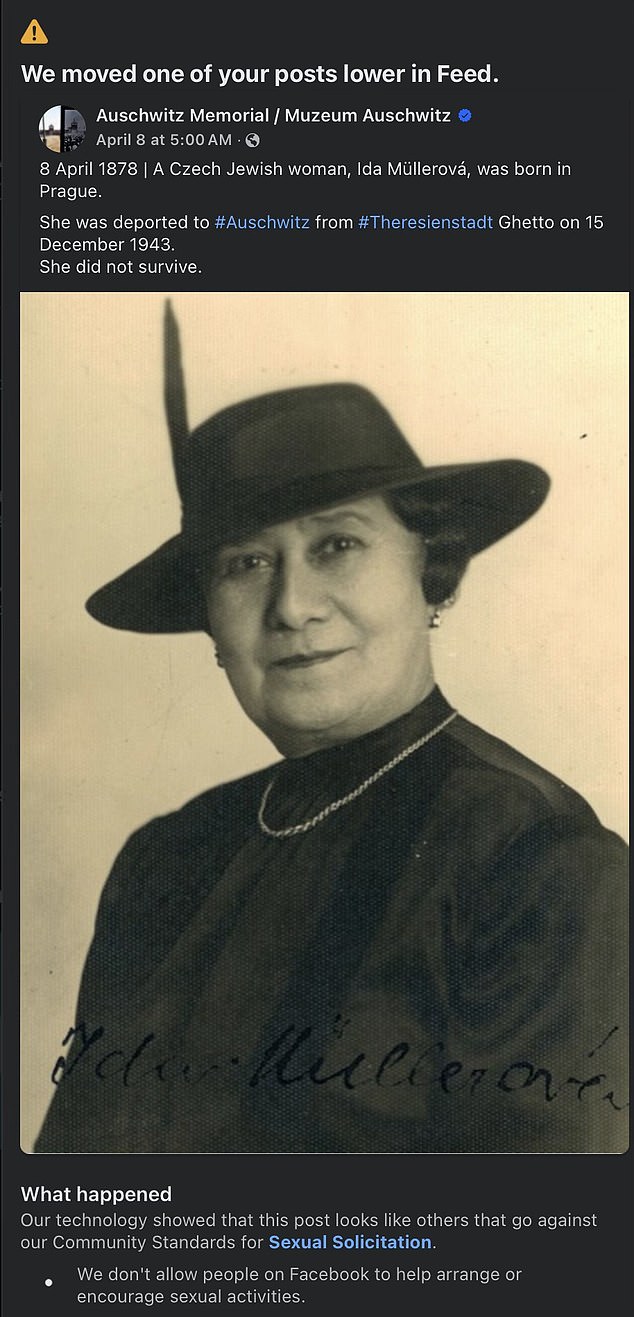Facebook has been accused of “severely offending” Holocaust survivors and “erasing history” after removing or “demoting” more than 20 posts in memory of the victims from the Auschwitz Museum’s social media page.
Outraged museum staff lashed out at the social media giant on Friday night, saying the removal or censorship of photographs and biographical information of those who died in the death camp was “detrimental to survivors, descendants and all those involved.” with the preservation of historical truth”.
In a statement, the museum said: “The posts, which serve as tribute to individual victims of Auschwitz, have been unfairly targeted by this platform’s content moderation system, citing absurd reasons such as ‘Adult nudity and sexual activity.'” , “Bullying and harassment,” “Hate speech” and “Incitement to violence.”
A Meta spokesperson told MailOnline that Facebook had “mistakenly sent notices to the Auschwitz Museum” that posts had been “demoted”, but said the posts had never actually been censored. “We offer our sincerest apologies for the error.”
However, they did not address the museum’s claim that an image, showing a group of Jewish orphans, had been “summarily removed without recourse” entirely. MailOnline has requested clarification.
One of the posts removed by Facebook shows a Czech Jewish woman named Ida Mullerova. She says she was deported to Auschwitz on December 15, 1943 and “did not survive.” The post was removed for “going against our community standards for sexual solicitation.”
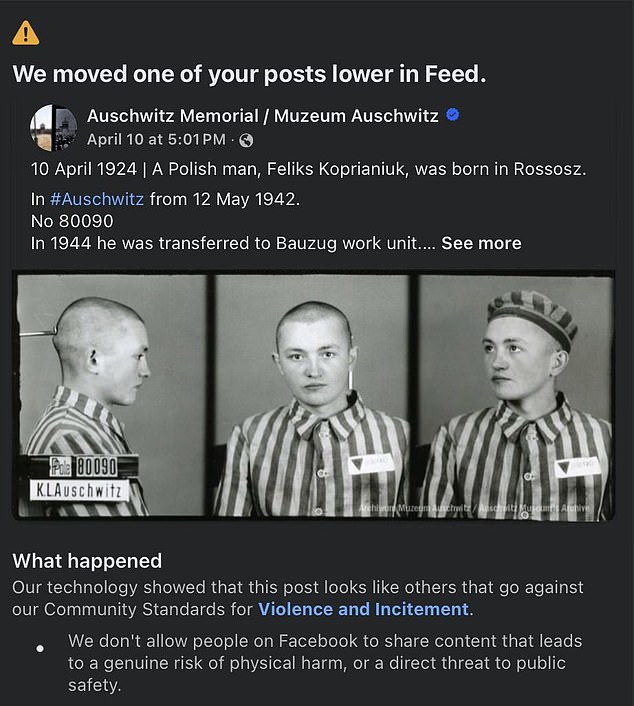
This monument to Polish prisoner Feliks Koprianiuk was removed for ‘violence and incitement’
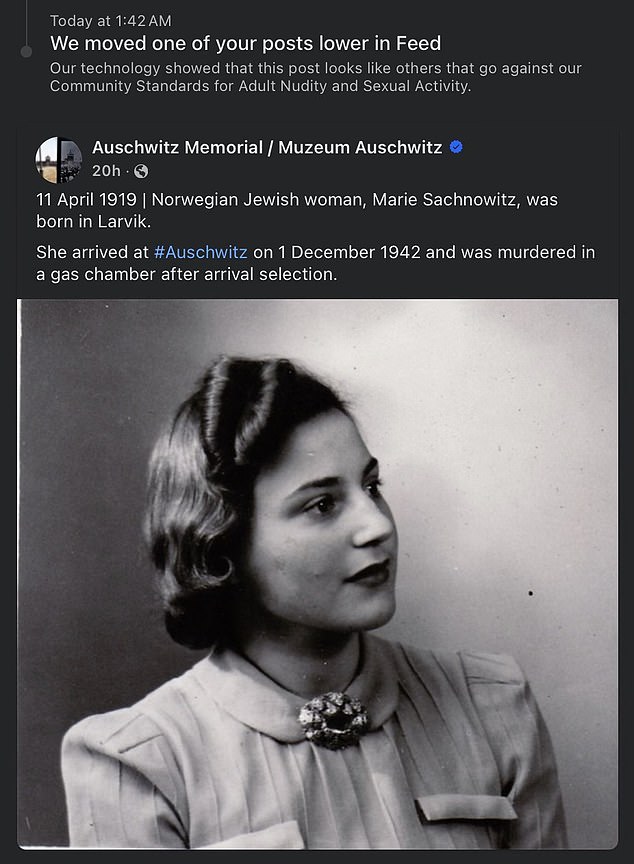
Norwegian Marie Sachnowitz was murdered in a gas chamber after arriving in December 1942. According to Facebook, the post violated its standards for “adult nudity and sexual activity.”
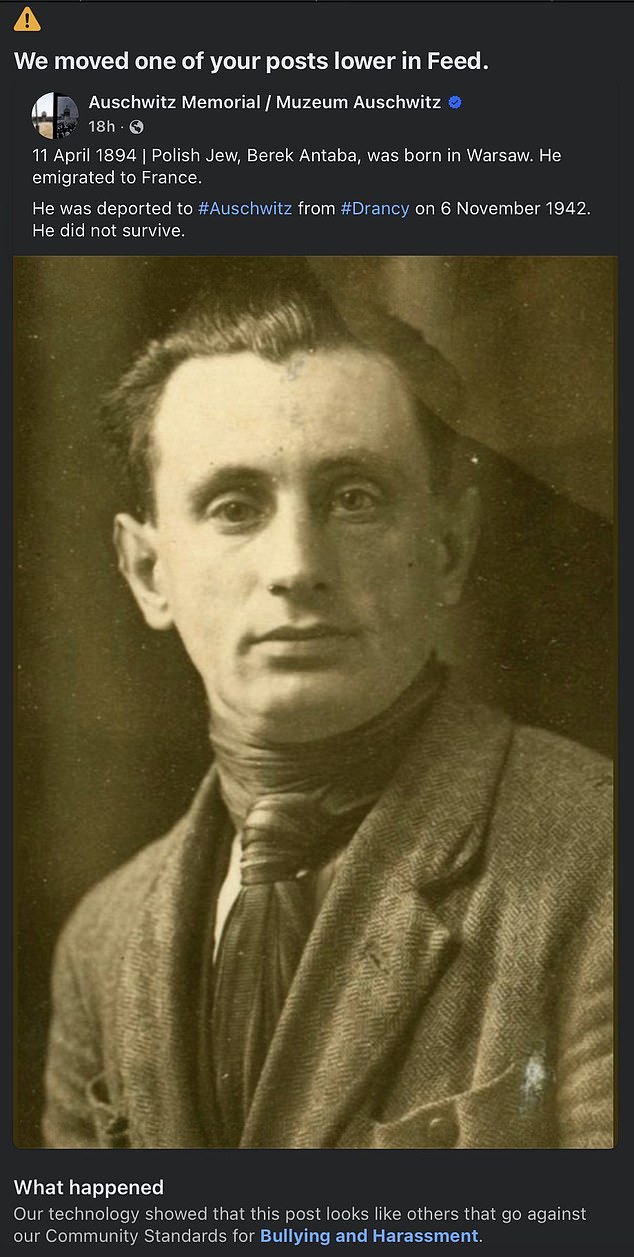
A monument to Polish Jew Berek Antaba was removed for going against Facebook’s community standards on ‘bullying and harassment’.
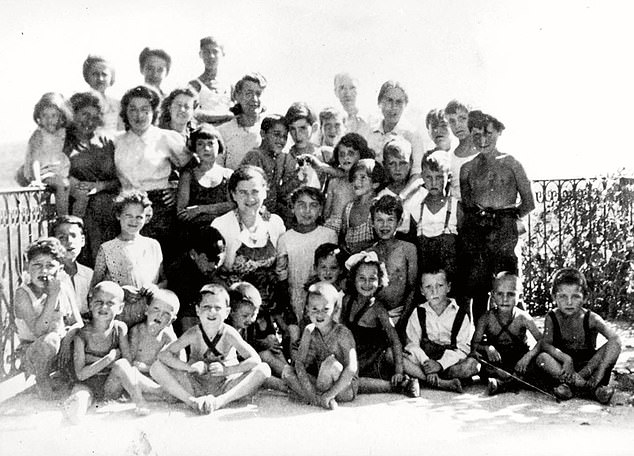
Facebook removed this image of Jewish children from the Izieu Orphanage because it violated unspecified “Community Standards.”
Established in April 1940 to hold Polish prisoners following the invasion of Poland by Nazi Germany, by the time it was liberated in January 1945, the Auschwitz death camp had become the largest killing machine in history.
More than a million people, mostly Jews, were executed, beaten, tortured, starved or gassed there, while many others died of disease or malnutrition.
One of the posts removed by Facebook shows a Czech Jewish woman named Ida Mullerova.
The post, which says she was deported to Auschwitz on December 15, 1943 and “did not survive,” was removed by Facebook for “going against our Community Standards for sexual solicitation.”
Another image of Polish prisoner Feliks Koprianiuk was removed for “violence and incitement.”
Yet another shows Norwegian Jewish woman Marie Sachnowitz, who was murdered in a gas chamber after arriving in December 1942. According to Facebook, the post violated its standards for “adult nudity and sexual activity.”
In another, the museum placed a monument to Berek Antaba, a Polish Jew born in 1984 who was deported to Auschwitz in November 1942.
“He did not survive,” the post says, along with his photograph.
But an anti-post note added by Facebook says: “We moved one of your posts lower in the Feed,” with the explanatory note below the image saying: “Our technology showed that this post is similar to others that go against of our Bullying Community Standards. and Harassment.’
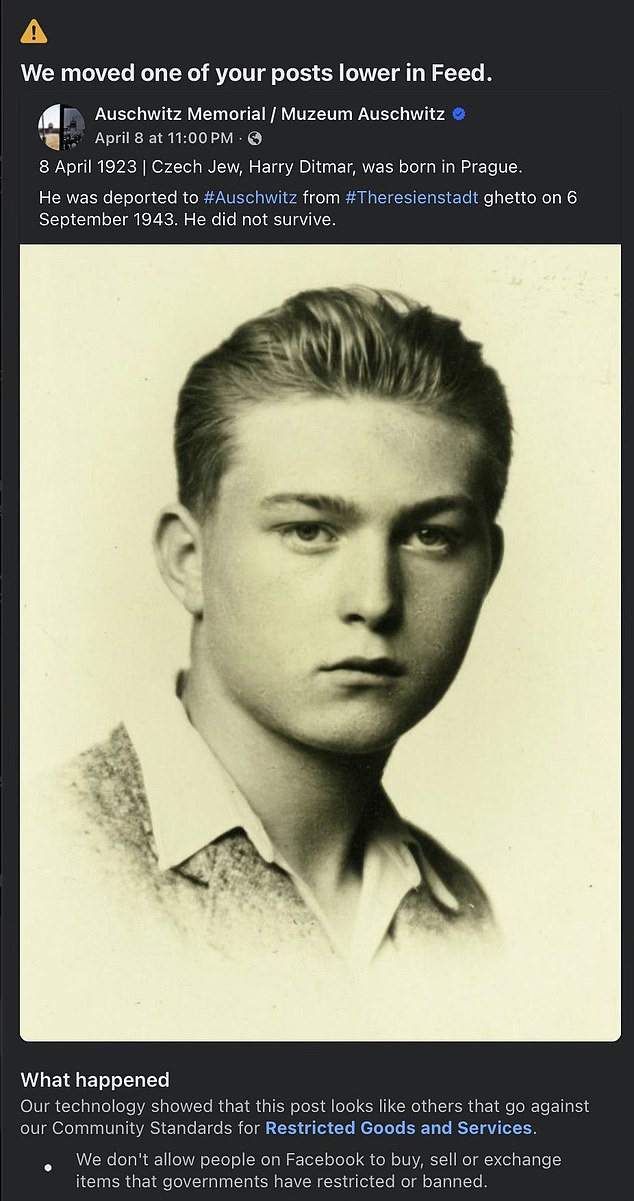
This monument to Czech Jew Harry Ditmar was removed from the Auschwitz Museum’s post for violating Facebook’s standards for “restricted goods and services.”
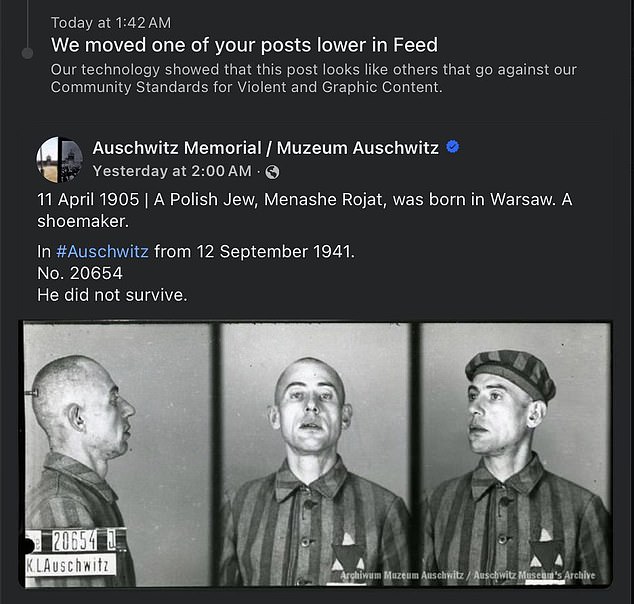
This Auschwitz Memorial Museum post about Polish Jew Menashe Rojat, prisoner number 20654, was removed by Facebook for having “violent and graphic content.”
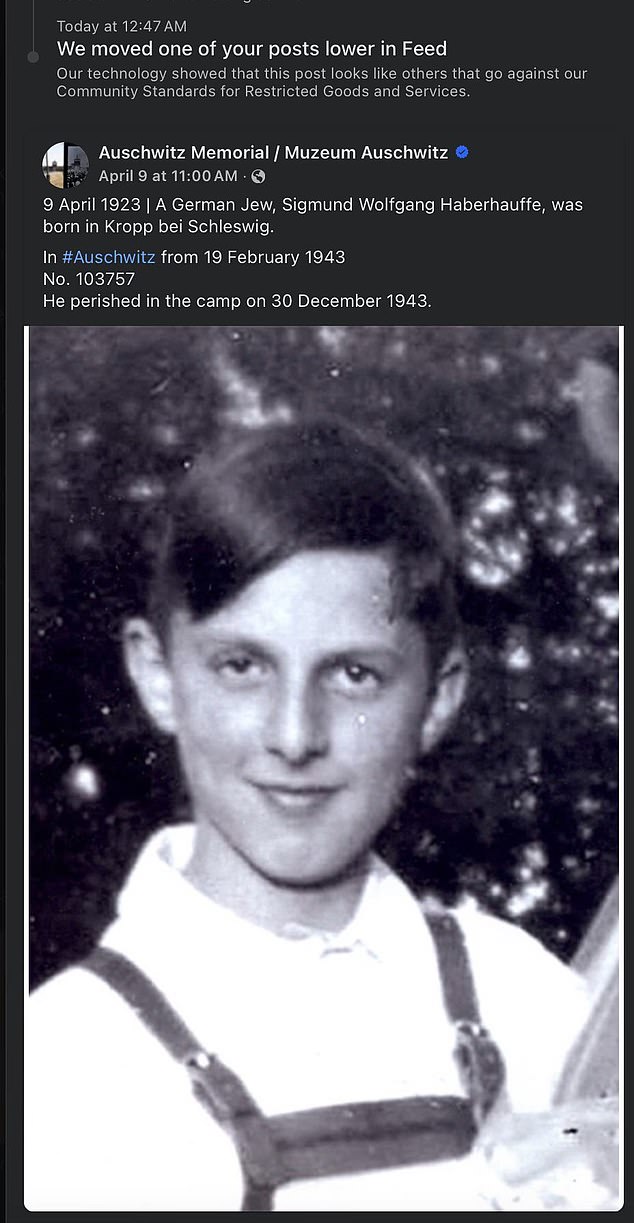
German Jew Sigmund Wolfgang Haberhauffe was imprisoned in Auschwitz in February 1943, where he was given prisoner number 103757. He died in the camp 10 months later, on December 30. Facebook removed the image of him for going against its “restricted goods and services” standards.
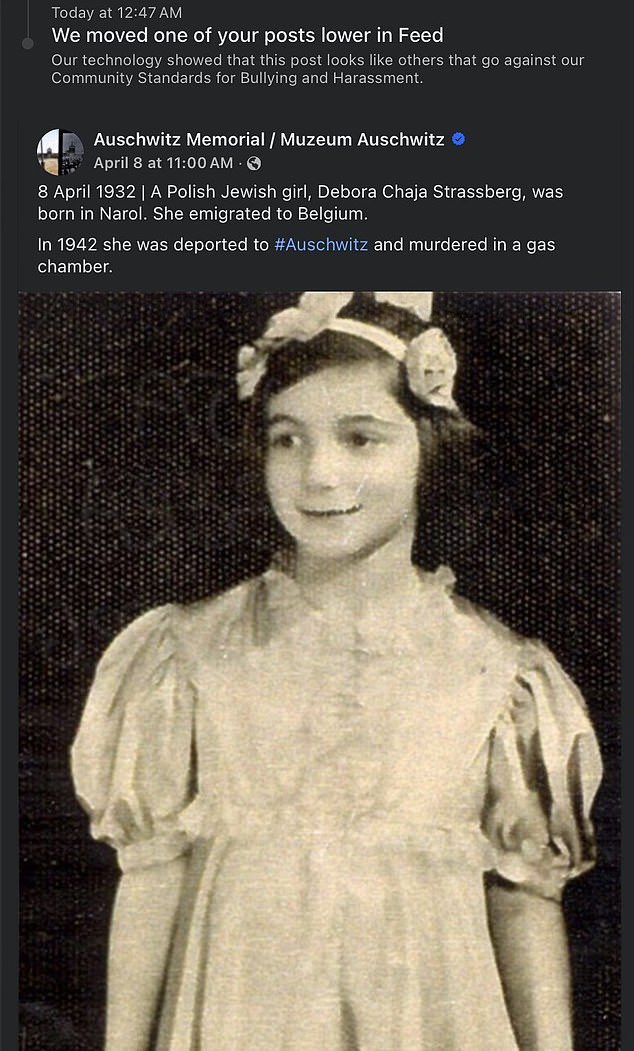
This memorial post about 10-year-old Jewish girl Debora Chaja Strassberg, who was murdered in an Auschwitz gas chamber in 1942, was also flagged by Facebook’s moderation systems.
These were just three of several that the museum said had been reported by Facebook, which shared screenshots of the posts, photographs and the website note.
The museum has now responded, saying the idea that the posts violate Facebook’s community standards “is absolutely confusing.”
It said: “For years, the Auschwitz Memorial has been sharing similar content without any problems, but suddenly, 21 posts are flagged simultaneously.”
‘Furthermore, we have also noted that a publication commemorating the tragic fate of Jewish children from an Izieu orphanage on April 6 was summarily removed without the possibility of appeal.
‘This appalling incident not only undermines the important work of our institution.
‘Such an act is unacceptable and offensive to the memory of the victims of Auschwitz that we try to preserve.
‘The publications in question present nothing more than respectful memories and historical documentation, showing the faces and biographical information of those who suffered and were murdered in a place that symbolizes one of the darkest chapters in human history.
“We demand an immediate and thorough review of this matter, along with a transparent explanation of why these posts were flagged in the first place.”
In response to the museum’s statement on X (formerly Twitter), some users suggested that the posts had been attacked by other Facebook users by falsely reporting the posts as inappropriate in a deliberate attempt to censor them.
Judy Shapiro, CEO of Trust Web and other companies, suggested “one reason why [posts were being flagged] It is if Facebook received many complaints from other users.
‘I have known hate groups to run these campaigns to remove content from the platform with many complaints.
‘If a platform receives enough complaints, it removes the content. It is a war of numbers and, unfortunately, the Jews have many enemies.
“As a community we are small,” he added.
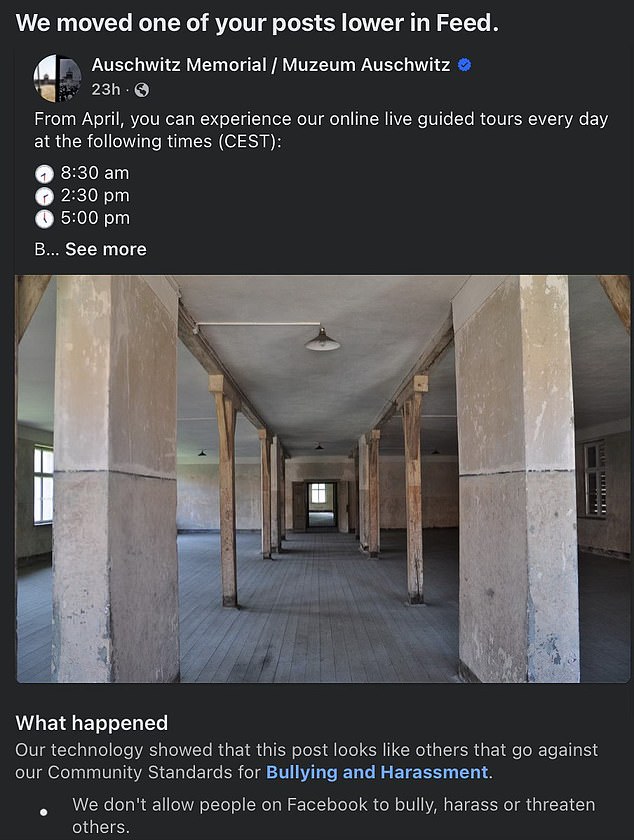
Facebook flagged this post about Auschwitz tours as ‘bullying and harassment’
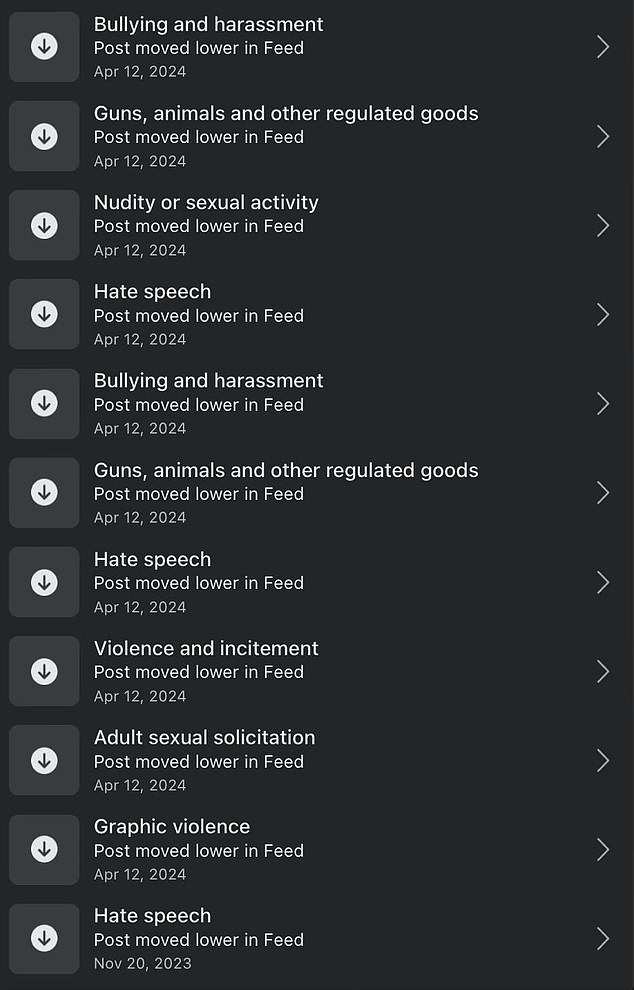
This image shared by the Auschwitz Memorial Museum shows the various reasons why Facebook flagged their posts, including hate speech, graphic violence, and sexual solicitation.
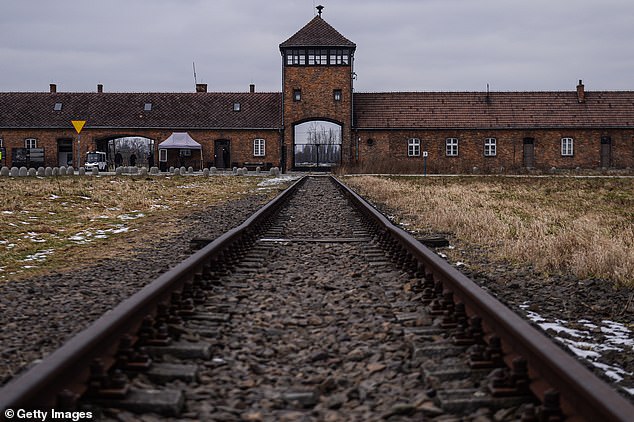
More than a million people, mostly Jews, were executed, beaten, tortured, starved or gassed at Auschwitz, while many others died of disease or malnutrition.
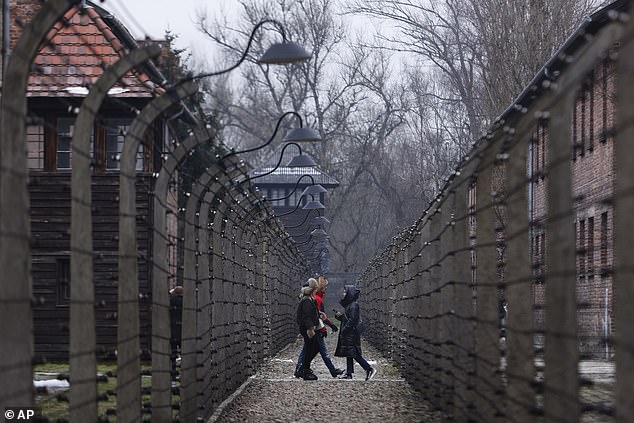
People visit the former Nazi German concentration and extermination camp Auschwitz-Birkenau in Oswiecim, Poland, Thursday, Jan. 26, 2023.
MailOnline contacted Meta, Facebook’s parent company, for its response to the museum’s claim.
In response, a Meta spokesperson said: ‘We mistakenly sent notices to the Auschwitz Museum that various content the museum had published had been downgraded.
‘In fact, that content does not violate our policies and was never downgraded. We offer our sincerest apologies for the error.’
MailOnline has asked for clarification on the alleged removal of the image showing Jewish children from the Izieu orphanage.

